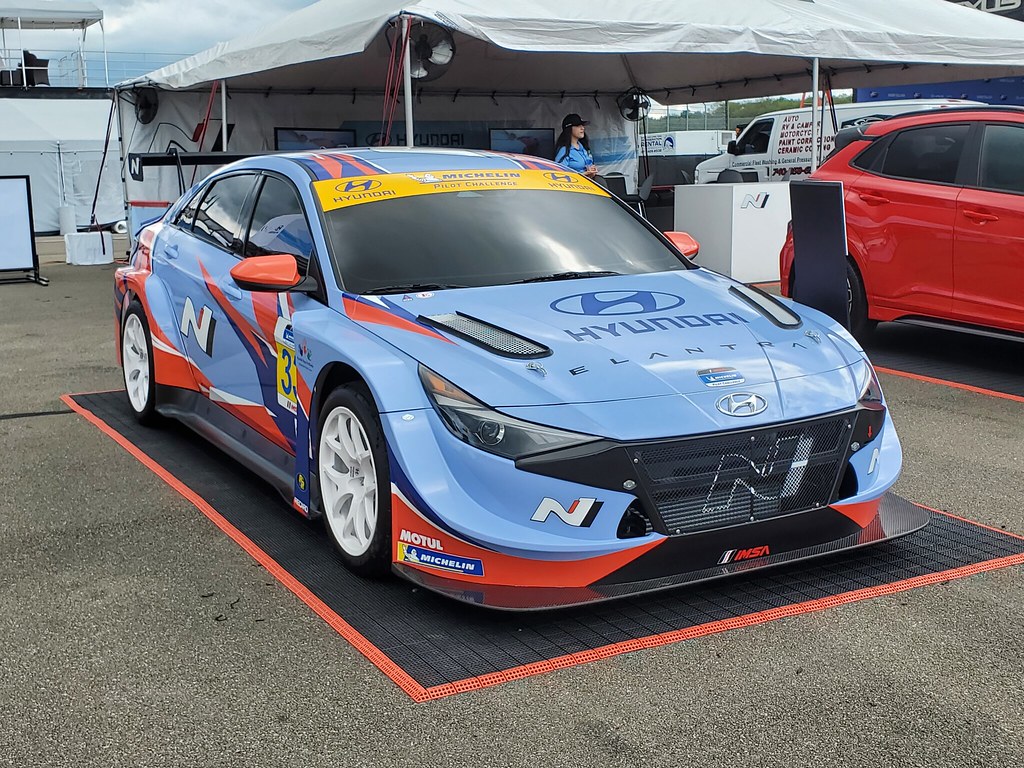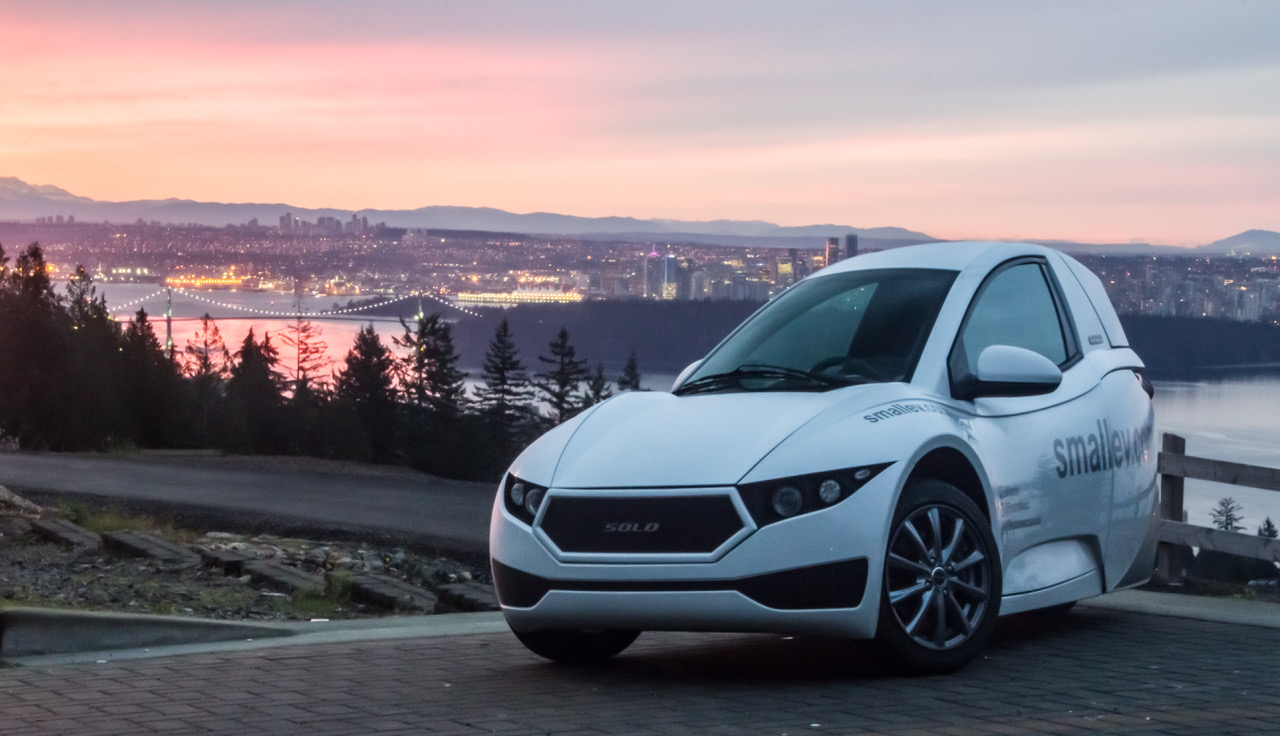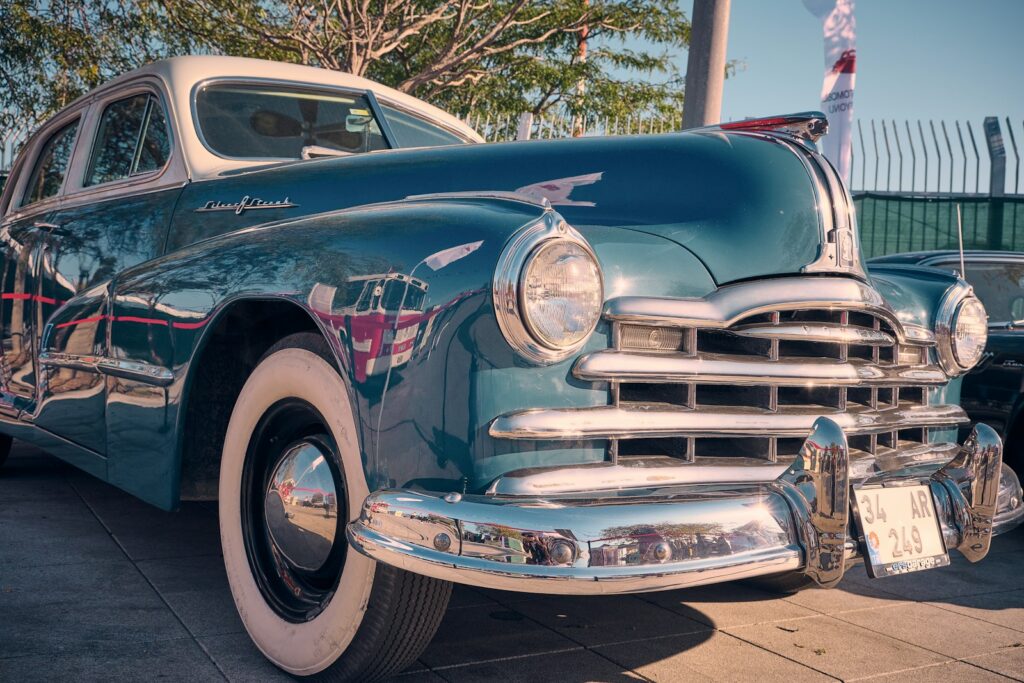
There’s an undeniable magic to classic cars, isn’t there? More than just transportation, these vintage beauties represent a tangible slice of history, a work of art, and for a growing number of savvy enthusiasts, a remarkably sound investment. We’ve all heard the captivating stories of forgotten barn finds that transform into six or seven-figure treasures. While some opportunities may have passed, a surprising number of vintage models are steadily increasing in value, making them stellar investment choices right now.
From a purely financial standpoint, classic cars have emerged as stellar long-term investments. Over the last five years alone, their popularity has surged, leading to a significant rise in online sales and an impressive appreciation of up to 25% annually for certain classics. This return can dwarf typical S&P 500 averages, with some luxury investment indexes even reporting a staggering 500% increase in value for specific models since the turn of the millennium. It’s a testament to their stability and reliability as an asset class.
But beyond the compelling financial returns, the true joy of classic car ownership lies in the experience. Imagine driving these increasingly rare examples firsthand, being part of their preservation, and joining a vibrant community of like-minded individuals. There’s something profoundly more rewarding about owning a tangible, beautiful classic car than simply seeing its value accumulate in a bank account. You can admire it, cruise with it, and share its history. However, it’s essential to acknowledge the practicalities: ongoing maintenance, specialized insurance, and secure storage are all part of the commitment. These vehicles are long-term assets, not short-term flips, and require a genuine passion. With that in mind, let’s explore some of the top classic cars currently presenting incredible investment opportunities.
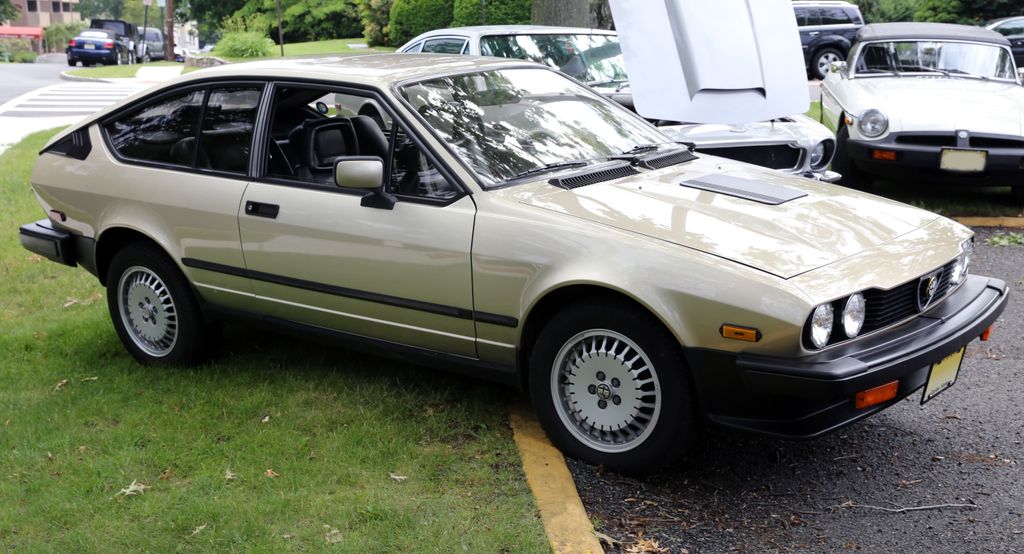
1. **Alfa Romeo GTV6**The Alfa Romeo GTV6 stands as a quintessential Italian-designed coupe, instantly recognizable by its unmistakably 1980s aesthetic. Built upon the robust, race-derived 116 type chassis, this model offers a compelling blend of stylistic flair and underlying performance. While over 20,000 units were originally produced, the GTV6 has steadily gained traction in the collector market, with its value showing a consistent upward trajectory.
This appreciation is particularly noteworthy as it mirrors the broader trend of rising valuations across other vintage Alfa Romeo models. The GTV6’s allure lies not just in its distinctive looks but also in its driving dynamics, inheriting a sporty character from its racing lineage. Collectors often seek out examples from its desirable years, specifically 1981 to 1986, which are seen as prime for investment due to their originality and historical significance.
Owning a GTV6 offers a unique entry point into the world of classic European sports cars without the exorbitant price tags of some contemporaries. Its 2.5L V6 engine provides a soulful soundtrack and engaging performance, making it a joy to drive as well as an appreciating asset. This combination of classic design, engaging mechanics, and a clear upward trend makes the GTV6 a smart choice for those looking to invest in automotive artistry.
Car Model Information: 2020 Honda Accord EX-L 1.5T
Name: Alfa Romeo Alfetta
Caption: 1978 Alfa Romeo Alfetta GTV 2.0
Manufacturer: Alfa Romeo
Production: 1972–1987
Assembly: Arese,Rosslyn, Gauteng
BodyStyle: Sedan (automobile)
Layout: Front-engine, rear-wheel-drive layout
Related: Alfa Romeo Giulietta (116),Alfa Romeo Alfa 6,Alfa Romeo 90
Categories: 1980s cars, Alfa Romeo vehicles, Articles with short description, CS1 Dutch-language sources (nl), CS1 French-language sources (fr)
Summary: The Alfa Romeo Alfetta (Type 116) is a front-engine, five-passenger saloon and fastback coupé manufactured and marketed by Italian automaker Alfa Romeo from 1972 to 1987 with a total of over 400,000 units produced during its production run.
The Alfetta was noted for the rear position of its transaxle (clutch and transmission) and its De Dion tube rear suspension — an arrangement designed to optimize handling by balancing front/rear weight distribution, as well as maintaining a low polar moment of inertia and low center of gravity. The interior of Coupé models featured a then unusual central tachometer placement — by itself, directly in front of the driver.
The Alfetta name, which means “little Alfa” in Italian is derived from the nickname of the Alfa Romeo Alfetta (Tipo 159), a successful Formula One car which in its last iteration introduced in 1951, paired a transaxle layout to De Dion tube rear suspension — like its modern namesake.
Get more information about: Alfa Romeo Alfetta
Buying a high-performing used car >>>
Brand: Alfa Romeo Model: GTV6
Price: $24,995 Mileage: 74,558 mi.
Read more about: Beyond the Legends: 11 Obscure Collector Cars Even the Hardcore Enthusiasts Might Have Missed

2. **BMW 2002**Once a surprisingly affordable classic, the BMW 2002 has seen a remarkable and consistent rise in value over the past decade. This nimble two-door sedan, named for its 2.0-liter engine and two-door configuration, has transitioned from a budget-friendly vintage ride to a sought-after collectible. Clean examples of the 2002 now command prices ranging from $20,000 to $50,000, underscoring its significant appreciation and consumer-focused appeal.
The 2002 is desirable across its entire production run and all trim levels, a testament to its enduring design and engineering. However, certain variants hold even greater appeal and value for investors. The rarer Targa, the practical 2000tii Touring, and the high-performance Turbo versions are particularly coveted by enthusiasts and collectors alike, fetching premium prices due to their scarcity and unique features, highlighting the importance of ‘rarity’ in valuation.
Another factor contributing to its increased desirability are models built prior to 1974, before BMW transitioned to a square taillight design, which are often considered more aesthetically pleasing by purists. The 2002’s robust 2.0L Inline-Four engine is known for its reliability and provides a spirited driving experience. Its status as an early icon for BMW, combined with its strong market performance, positions the 2002 as an excellent long-term investment that is both engaging and accessible.
Car Model Information: 1971 BMW 2002
Name: BMW 02 Series
Caption: BMW 1600-2
Production: 1966–1977,837,038 units
Assembly: Munich
Class: Compact executive car
BodyStyle: 2-door coupé , 2-door convertible , 3-door hatchback
Layout: Front-engine, rear-wheel-drive layout
Engine: ubl
Wheelbase: cvt
Length: cvt
Width: cvt
Height: cvt
Weight: cvt
Transmission: 4-speed manual , 5-speed manual ,3-speed automatic
Successor: BMW 3 Series (E21)
Designer: Giovanni Michelotti
Manufacturer: BMW
Categories: 1970s cars, Articles with short description, BMW vehicles, CS1 German-language sources (de), CS1 Italian-language sources (it)
Summary: The BMW 02 Series is a range of sporty compact executive cars produced by German automaker BMW between 1966 and 1977, based on a shortened version of the New Class Sedans.
The first 02 Series produced was the 1600-2 (later renamed 1602) in 1966. In 1975, the 02 Series was replaced by the E21 3 Series (except for the 1502 model, which continued until 1977).
Get more information about: BMW 02 Series
Buying a high-performing used car >>>
Brand: BMW Model: 2002
Price: $45,550 Mileage: 5,001 mi.
Read more about: Inside Jordan Spieth’s Curated Garage: A Deep Dive into the Golfer’s Luxurious Yet Practical Car Collection and Dallas Estate
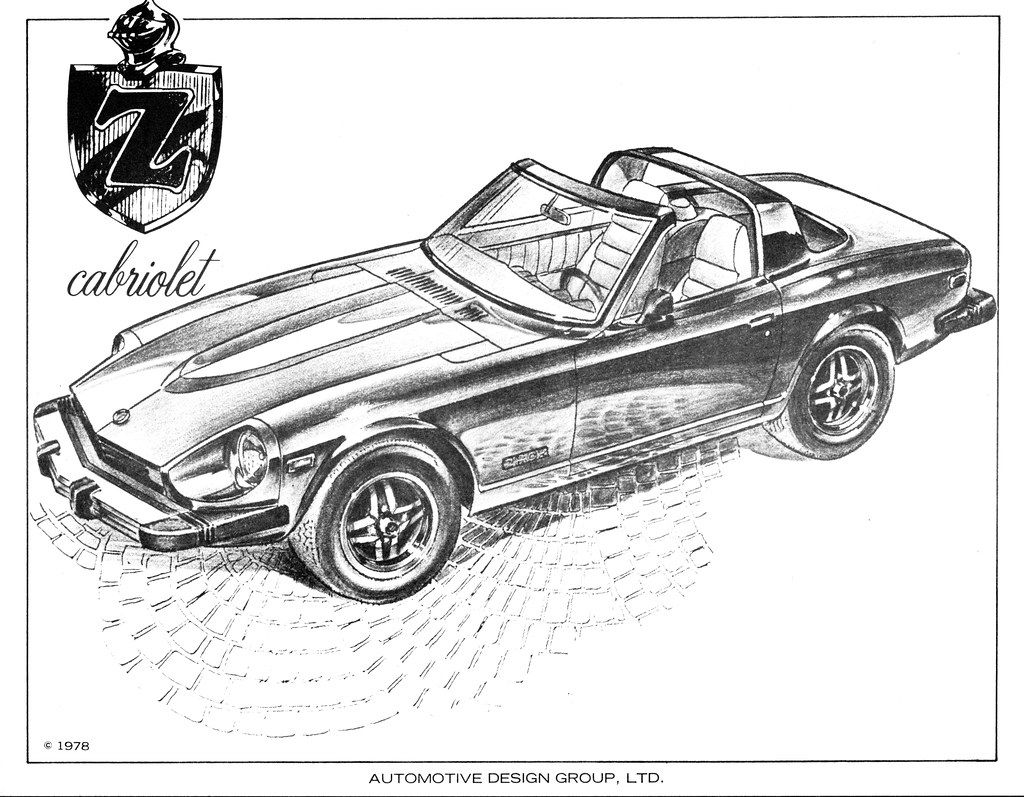
3. **Datsun 240/260/280Z**Though sometimes playfully dubbed a “poor man’s Porsche 911,” the Datsun Z lineup, encompassing the 240Z, 260Z, and 280Z, are far from inferior; they are incredible vintage sports cars that continue to offer exhilarating performance. Just a decade or two ago, these models were available for a genuine bargain, but that era is firmly in the rearview mirror. Today, all Z models have been steadily climbing in value.
This consistent appreciation makes the Datsun Z series a compelling investment, particularly for those who missed out on earlier opportunities in the classic car market. Their sleek designs, inspired by European sports cars, combined with reliable Japanese engineering, have cemented their place in automotive history. The 2.4L Straight-Six engine in the 240Z, for example, delivers a driving experience that remains highly engaging and enjoyable for enthusiasts.
Interestingly, even modified race-built Zs tend to hold their value remarkably well, indicating the strong enthusiast base and the inherent robustness of the platform. This resilience to modification, typically a value-reducer for other classics, further underlines their appeal. From their desirable years spanning 1969 to 1978, the Datsun Z cars represent a smart entry into the world of Japanese vintage performance, promising both driving pleasure and solid financial returns for the discerning buyer.
Car Model Information: 1980 Datsun 280ZX 10TH ANNIVERSARY
Name: Nissan Fairlady Z (Datsun 240Z, 260Z, and 280Z)
Aka: unbulleted list
Manufacturer: Nissan
Production: 1969–1978
Class: Sports car
Layout: Front-engine, rear-wheel-drive layout
Assembly: Hiratsuka, Kanagawa
BodyStyle: unbulleted list
Designer: Yoshihiko Matsuo
Predecessor: Datsun Sports
Successor: Nissan Fairlady Z (S130)
Caption: 1970–1973 Nissan Fairlady Z
Categories: 1970s cars, All Wikipedia articles written in American English, All articles with unsourced statements, Articles with short description, Articles with unsourced statements from February 2021
Summary: The Nissan S30, sold in Japan as the Nissan Fairlady Z but badged as the Datsun 240Z, 260Z, and 280Z for export, are 2-seat sports cars and 2+2 GT cars produced by Nissan from 1969 until 1978. The S30 was conceived of by Yutaka Katayama, the President of Nissan Motor Corporation U.S.A., and designed by a team led by Yoshihiko Matsuo, the head of Nissan’s Sports Car Styling Studio. It is the first car in Nissan’s Z series of sports cars.
The S30 had four-wheel independent suspension and a powerful straight-six engine with an overhead camshaft, features identified with far more expensive premium European sports cars and coupés such as the Jaguar E-Type and BMW 2800 CS, but absent from similarly priced sports cars such as the Alfa Romeo Spider, MGB and Opel GT, which had smaller four-cylinder engines and rear live axles. The S30’s styling, engineering, relatively low price, and impressive performance resonated with the public, received a positive response from both buyers and the motoring press, and immediately generated long waiting lists.
As a halo car, the S30 broadened the acceptance of Japanese carmakers beyond their image as producers of practical and reliable but prosaic and unfashionable economy cars. Datsun’s growing dealer network—compared to limited production imported sports cars manufactured by Jaguar, BMW, Porsche, Alfa Romeo, and Fiat—ensured both easy purchase and ready maintenance.
The S30 was initially sold alongside the smaller four-cylinder Datsun Sports, which was dropped from production in 1970. The S30 240Z is unrelated to the later 240SX, sold as the Silvia in Japan.
Get more information about: Nissan Fairlady Z (S30)
Buying a high-performing used car >>>
Brand: Datsun Model: Z
Price: $69,980 Mileage: 17,351 mi.
Read more about: Beyond the Garage: 15 Vintage Cars That Are Secretly Skyrocketing in Value Right Now
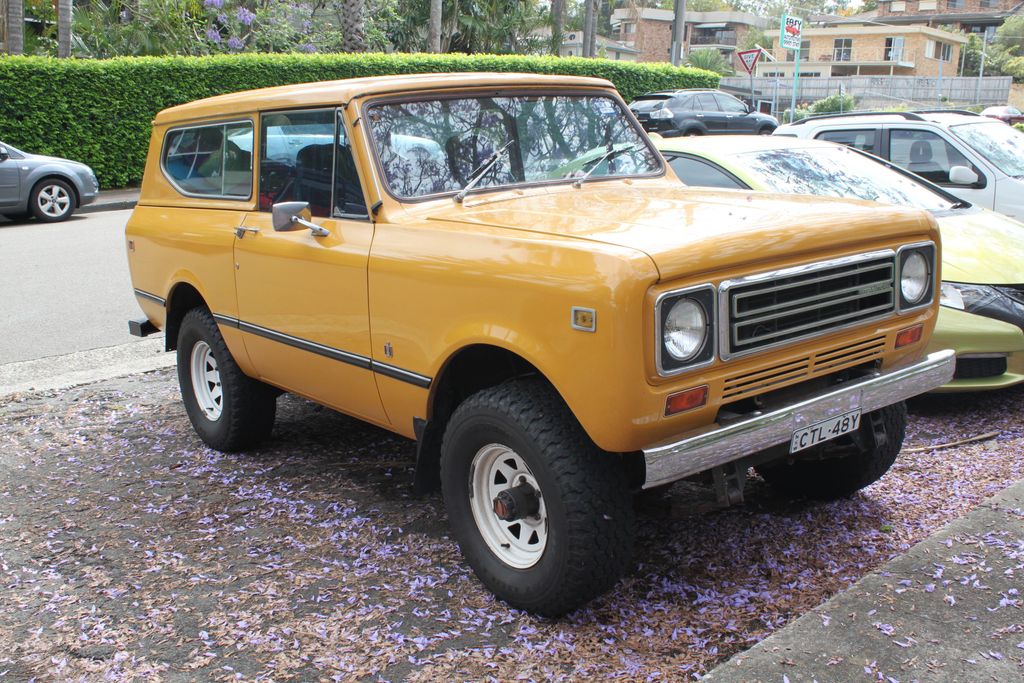
4. **International Harvester Scout (& Scout II)**For those who might have missed the boat on the original Ford Bronco, which has since skyrocketed in value, the International Harvester Scout and Scout II offer an equally fantastic vintage 4×4 experience without the prohibitive price tag. These robust, go-anywhere vehicles are still acquirable for a fair price, making them an excellent alternative for collectors looking for a classic SUV with strong investment potential and practical utility.
The pricing for Scouts can vary significantly, with some specimens going for as little as $10,000 to $15,000, presenting a solid entry point for a project vehicle. Conversely, cleaner, more pristine, and original examples can fetch as much as $80,000, demonstrating the wide range of investment potential based on condition and provenance. This flexibility allows buyers to enter the market at different budget levels, making it an accessible option for many.
Both the Scout and Scout II are also incredibly popular as platforms for “restomod” off-road builds, where modern components are integrated while retaining the classic exterior. This versatility and the increasing demand for vintage 4x4s ensure their continued appreciation. Spanning desirable years from 1961 to 1980 and offering a variety of engine options including 2.5L i4, 3.2L i4, or 3.8L i6, 4.4L V8, & 5.0L V8, the International Harvester Scout is a rugged and rewarding investment.
Car Model Information: 2020 Honda Accord EX-L 1.5T
Name: International Scout
Caption: 1978 Scout II wagon
Manufacturer: International Harvester
Production: 1961–1980
Class: Full-size,SUV
Assembly: Fort Wayne, Indiana
BodyStyle: SUV
Layout: Front-engine, rear-wheel-drive layout,rear-wheel drive
Categories: 1970s cars, 1980s cars, All-wheel-drive vehicles, All articles needing additional references, All articles with dead external links
Summary: The International Scout is an off-road vehicle produced by International Harvester from 1960 to 1980. Created as a competitor for the Jeep CJ, the Scout was the precursor of more sophisticated SUVs, including the Ford Bronco, Chevrolet Blazer, and the later Jeep Cherokee.
Produced for two generations, the Scout was designed as an open-top two-door truck as a base vehicle with options to configure it as a station wagon, half-cab pickup truck, or a soft-top convertible.
International Harvester assembled the model line in its facility in Fort Wayne, Indiana.
Get more information about: International Scout
Buying a high-performing used car >>>
Brand: International Harvester Model: Scout
Price: $24,995 Mileage: 74,558 mi.
Read more about: Beyond the Garage: 15 Vintage Cars That Are Secretly Skyrocketing in Value Right Now

5. **Land Rover Defender**The Land Rover Defender, an icon of rugged capability, already commands a significant price tag, but its value continues to climb year after year, solidifying its position as a truly fantastic investment vehicle. Its unparalleled off-road prowess and distinctive utilitarian design have cultivated a global following, making it a highly desirable asset in the classic car market that reliably holds its appeal.
The investment potential of the Defender is further enhanced by the availability of “basket-case” examples at lower price points. This allows enthusiasts with a sufficient initial budget to acquire a project vehicle and then leverage the expertise of numerous restoration outfits specializing in vintage Defenders. This restoration path can lead to substantial profits, turning a neglected vehicle into a high-value collectible, offering a clear solution-oriented approach.
While the upfront cost might be higher than some other classics on this list, the consistent upward trend in Defender values makes it a secure long-term hold. Models from 1983 to 1997, equipped with various 2.5L Petrol, Diesel, or Turbodiesel i4, or 3.5L V8 engines, are particularly sought after. Investing in a retro Defender is a strategic move for those who appreciate timeless utility and undeniable market strength, combining passion with practical financial foresight.
Car Model Information: 2020 Lincoln Aviator Reserve AWD
Caption: 2015 Land Rover Defender 90 (Australia)
Name: Land Rover Defender
Manufacturer: ubl
Class: Small offroader
Aka: Land Rover 90, Ninety, 110, One Ten, One Two Seven (1983–1990)
Production: ubl
Predecessor: Land Rover Series III
Successor: Land Rover Defender (L663)
Assembly: Moorebank, New South Wales,Brazil
Layout: Front-engine, four-wheel-drive layout,four-wheel drive
Categories: 1990s cars, 2000s cars, 2010s cars, All-wheel-drive vehicles, All articles with unsourced statements
Summary: The Land Rover Defender (introduced as the Land Rover One Ten, joined in 1984 by the Land Rover Ninety, plus the extra-length Land Rover One Two Seven in 1985) is a series of British off-road cars and pickup trucks. They have four-wheel drive, and were developed in the 1980s from the Land Rover series which was launched at the Amsterdam Motor Show in April 1948. Following the 1989 introduction of the Land Rover Discovery, the term ‘Land Rover’ became the name of a broader marque, no longer the name of a specific model; thus in 1990 Land Rover renamed them as Defender 90 and Defender 110 and Defender 130 respectively.
The vehicle, a British equivalent of the Second World War derived (Willys) Jeep, gained a worldwide reputation for ruggedness and versatility. With a steel ladder chassis and an aluminium alloy bodywork, the Land Rover originally used detuned versions of Rover engines.
Though the Defender was not a new generation design, it incorporated significant changes compared to the Land Rover series, such as adopting coil springs front and rear. Coil springs offered both better ride quality and improved axle articulation. The addition of a centre differential to the transfer case gave the Defender permanent four-wheel-drive capability. Both changes were derived from the original Range Rover, and the interiors were also modernised. Whilst the engines were carried over from the Series III, a new series of modern and more powerful engines was progressively introduced.
Even when ignoring the series Land Rovers and perhaps ongoing licence products, the 90/110 and Defender models’ 33-year production run were ranked as the sixteenth longest single-generation car in history in 2020.
In 2020, Jaguar Land Rover introduced an all new generation of Land Rover Defender Land Rover Defender (L663) switching from body on chassis to integrated bodywork and from live, rigid axles to all around independent suspension.
Get more information about: Land Rover Defender
Buying a high-performing used car >>>
Brand: Land Rover Model: Defender
Price: $27,499 Mileage: 86,808 mi.
Read more about: I’m a Mechanic: Some Cars Experts Would Never Buy (and Why You Should Avoid Them Too)
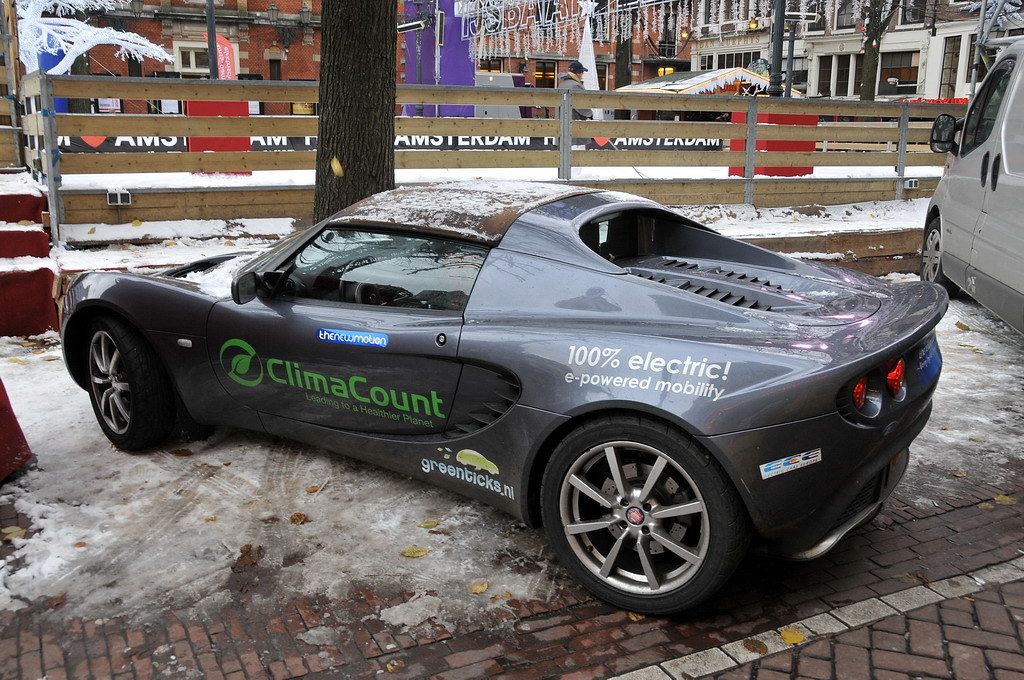
6. **Lotus Elise**Few production cars in history embody the principle of minimizing weight as thoroughly as the Lotus Elise. This relentless focus on lightness resulted in one of the most agile and responsive sports cars ever created, delivering an unparalleled connection between driver and road. The Elise’s legendary handling and pure driving experience have made it incredibly popular among automotive enthusiasts seeking an authentic connection with their vehicle.
This passionate following, driven by the desire for a genuine “true driver’s car,” has directly translated into the Elise becoming an outstanding investment vehicle. Unlike many heavier, more complex modern sports cars, the Elise offers an unfiltered analog experience that is becoming increasingly rare and valuable. Its minimalist approach to design and engineering speaks to purists, enhancing its authoritative appeal as a performance machine.
With desirable years spanning from 1996 to 2011, this ultra-lightweight coupe, typically powered by a 1.8L Inline-Four, is steadily appreciating in value. Its iconic status for delivering incredible performance through intelligent engineering, rather than brute force, sets it apart. For collectors seeking a high-performing and engaging classic that also promises strong financial returns, the Lotus Elise presents a compelling and clear proposition.
Car Model Information: 2005 Lotus Elise Supercharged
Caption: Lotus Elise S Club Racer (Series 3)
Name: Lotus Elise
Manufacturer: Lotus Cars
Production: 1996–2021,35,124 produced
Assembly: Hethel,Norfolk,England
Predecessor: Lotus Elan#Elan M100
Successor: Lotus Emira,Lotus Theory 1
Class: Sports car
BodyStyle: Targa top,Roadster (automobile)
Layout: Rear mid-engine, rear-wheel-drive layout
Platform: Lotus small car platform
Sp: uk
Categories: 2000s cars, 2010s cars, All articles with dead external links, All articles with unsourced statements, Articles with dead external links from November 2016
Summary: The Lotus Elise is a sports car conceived in early 1994 and released in September 1996 by the British manufacturer Lotus Cars. A two-seater roadster with a rear mid-engine, rear-wheel-drive layout, the Elise has a fibreglass body shell atop its bonded extruded aluminium chassis that provides a rigid platform for the suspension, while keeping weight and production costs to a minimum. The Elise was named after Elisa Artioli, the granddaughter of Romano Artioli who was chairman of Lotus and Bugatti at the time of the car’s launch.
Production of the Elise, Exige and Evora ended in 2021. It was replaced by the Lotus Emira.
Get more information about: Lotus Elise
Buying a high-performing used car >>>
Brand: Lotus Model: Elise
Price: $72,999 Mileage: 25,000 mi.
Read more about: Beyond the Legends: 11 Obscure Collector Cars Even the Hardcore Enthusiasts Might Have Missed
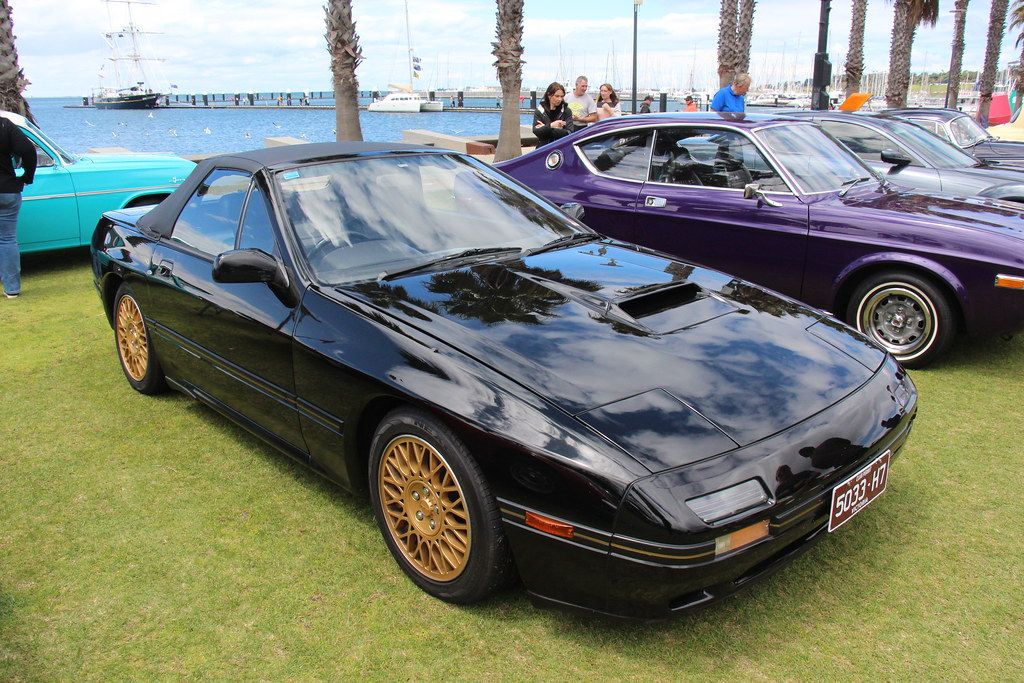
7. **Mazda RX-7**The surge in popularity for Japanese Domestic Market (JDM) cars in recent times is powerfully evidenced by the Mazda RX-7. Clean examples of this sleek, Japanese-designed sports car are now routinely fetching prices close to $50,000, a clear indicator of its rapidly increasing value in the collector’s market. This upward trajectory shows no signs of slowing, making it a compelling target for investors in the JDM scene.
What truly sets the RX-7 apart is its unique Wankel rotary engine, a distinctive powerplant that offers a remarkably smooth and high-revving character unlike conventional piston engines. This innovative engineering, combined with its iconic pop-up headlights and aerodynamic bodywork, ensures the RX-7 stands out visually and dynamically. It is, without a doubt, a modern-day classic that blends performance with groundbreaking technology and a unique historical significance.
Focusing on desirable years from 1985 to 1997, encompassing various 1.1L, Turbocharged 1.1L, and 1.3L Wankel Rotary configurations, the RX-7 is becoming a cornerstone of JDM collections. Its blend of exotic engine technology, timeless design, and a strong, growing enthusiast base positions it as an exceptional opportunity for those looking to invest in a piece of automotive history that continues to accelerate in value, offering both engaging ownership and substantial financial upside.
Navigating the classic car market for investment requires more than just a keen eye for aesthetics; it demands a strategic approach rooted in understanding what truly drives value. While the thrill of the open road is a significant part of the allure, for the savvy investor, identifying those rare gems that promise appreciation involves a deeper dive into specific attributes. It’s about combining passion with practicality to ensure your automotive asset truly performs. With that in mind, let’s explore the crucial factors that differentiate an ordinary classic from an investment-grade masterpiece.
Before you commit to your next vintage vehicle, consider these key elements that can significantly impact a classic car’s long-term value. These aren’t just details; they are the benchmarks that serious collectors and investors use to make informed decisions. Understanding them is your roadmap to a successful classic car acquisition.
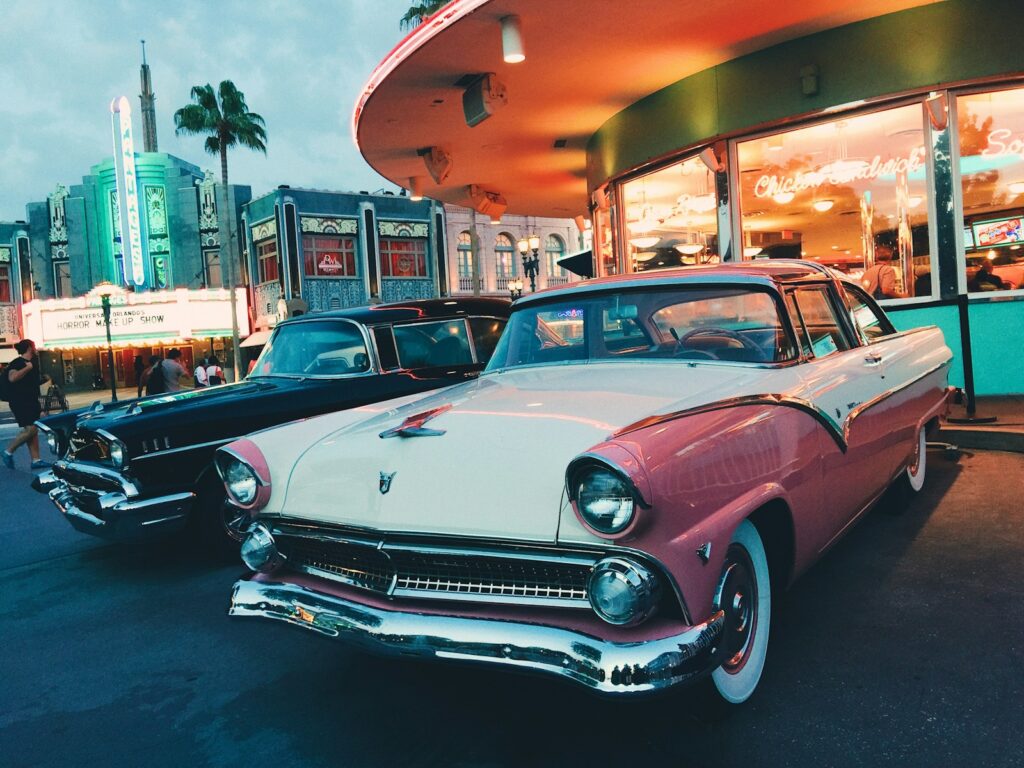
**Key Factors For Identifying Investment-Grade Classics**
**Originality**
One of the most powerful determinants of a classic car’s value is its originality. Collectors consistently prioritize vehicles that remain as close to their factory specifications as possible. This means a car that hasn’t been heavily modified, or one that retains its original paint color, will generally command a higher price.
Even tasteful upgrades can detract from value if they deviate from the car’s authentic heritage. The gold standard in this realm is a “matching numbers” example, meaning the vehicle still possesses its original engine, gearbox, and frame with their corresponding serial numbers from the factory. Such cars are inherently more valuable due to their historical integrity.
Furthermore, classic cars with early production numbers from their respective model runs often carry a premium. These initial examples are frequently seen as purer representations of the design and engineering intent. A meticulously restored car will also hold more value than one that has simply been repaired, especially if the restoration work adheres to original factory standards.
**Rarity**
Unsurprisingly, scarcity plays a significant role in determining a classic car’s worth. The fewer examples of a particular model that were produced, the higher its potential value will be. Limited production runs inherently create an exclusive market, driving up demand among collectors.
Beyond just production numbers, specific rare features or variants can also escalate a vehicle’s worth. This could include unusual factory options like a sunroof on a model where it was rarely offered, or a less common left-hand drive (LHD) configuration in markets predominantly favoring right-hand drive. High-performance trims or special limited-edition models are also highly sought after.
Ultimately, it can be argued that rarity is a fundamental pillar of what gives investment-grade classic cars their enduring value. It’s the thrill of owning something truly unique, something that few others can acquire, that fuels this part of the market.
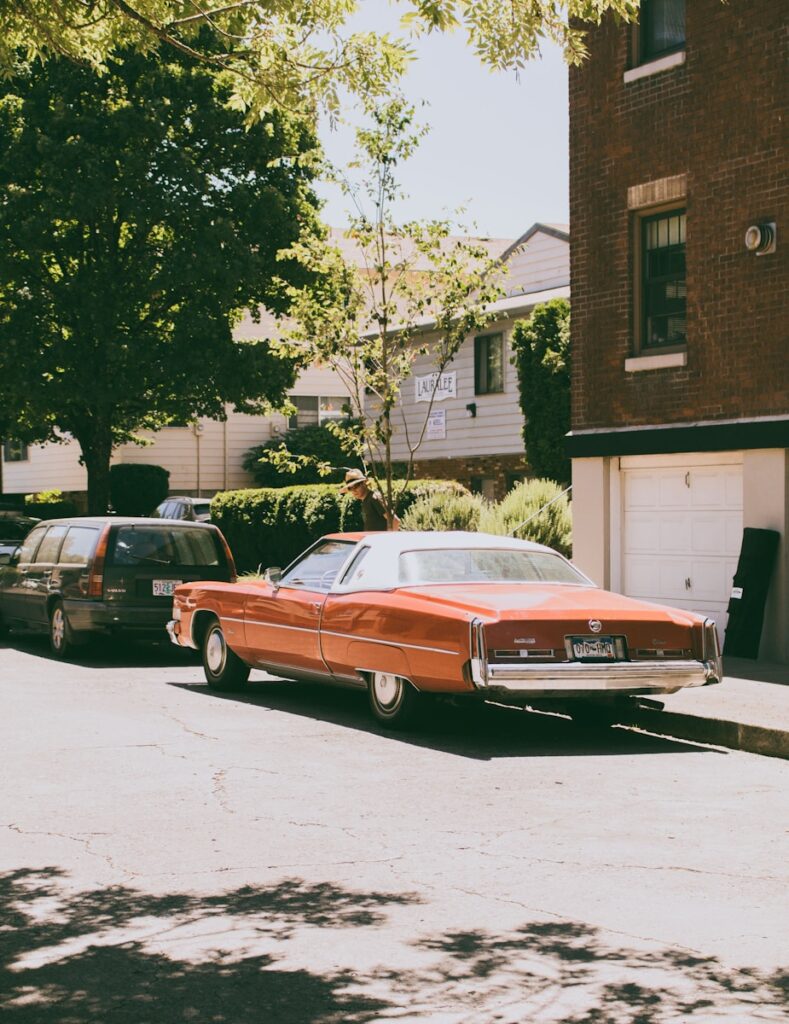
**Documentation & Records**
For any classic car, robust documentation and a comprehensive history are invaluable. A vehicle accompanied by extensive records of its ownership, servicing history, and any competition participation will always be significantly more valuable. This transparency provides potential investors with an objective understanding of how the car was cared for throughout its life.
Such records can reveal crucial insights into the vehicle’s maintenance routines, any recurring issues it may have faced, and the quality of repairs performed. This level of verifiable provenance offers a clear picture of the car’s health and authenticity, building trust and confidence for a prospective buyer.
Beyond service records, the presence of original factory items like included tool kits, owner’s manuals, and build sheets can significantly boost a car’s value. These small details underscore a vehicle that has been meticulously preserved and cherished over the decades, signaling its investment potential.
**Innovation & Historical Significance**
Models that hold a special place in automotive history or that pushed technological boundaries are almost always more valuable. This category includes vehicles that pioneered a new technology or system, established new benchmarks for speed or performance, or were powered by truly idiosyncratic engine configurations.
Early generations of now-iconic models, such as the Ford Bronco or BMW M3, often boast significantly higher valuations because they represent the genesis of a celebrated lineage. These cars aren’t just vehicles; they are artifacts of progress and turning points in design or engineering.
Their historical context makes them compelling to collectors who appreciate a narrative beyond mere performance. Owning a car that represents a ‘first’ or a ‘best’ in its era adds an undeniable layer of prestige and investment appeal.
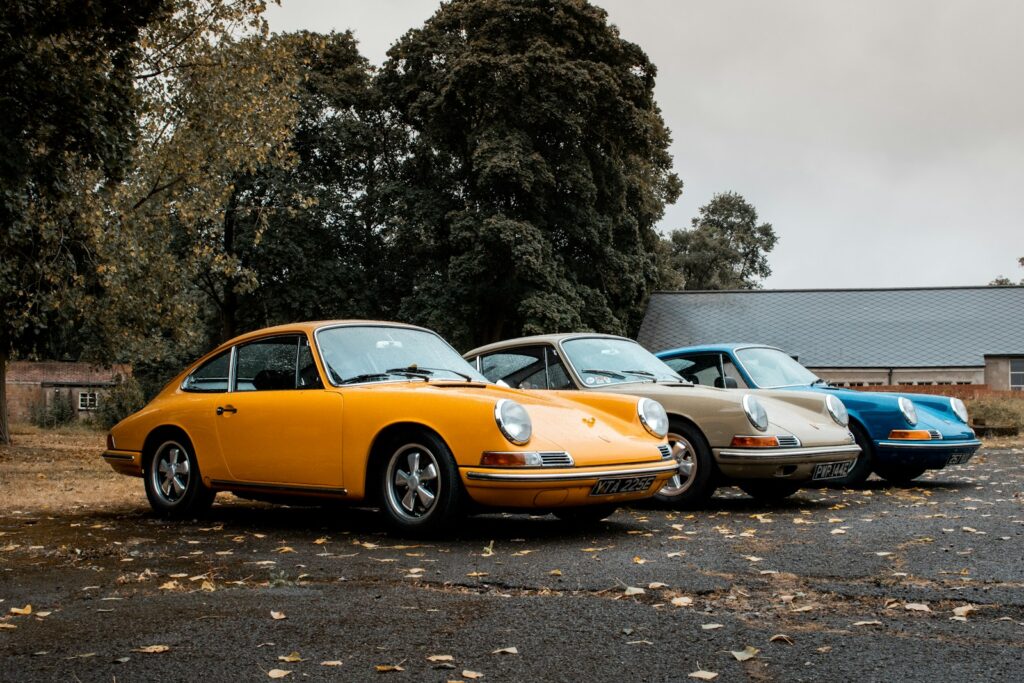
**Appearance**
While beauty is often in the eye of the beholder, a classic car with an iconic and timeless aesthetic design tends to result in higher valuations. Vehicles that have managed to look good through the decades, resisting the ebb and flow of transient fashion trends, maintain their appeal across generations of enthusiasts.
Furthermore, if a car’s bodywork was conceived by a renowned designer or coachbuilder, this connection to artistry can significantly elevate its worth. Names like Pininfarina, Bertone, or Zagato add a layer of design provenance that collectors deeply appreciate.
Even if a classic car isn’t universally considered beautiful, its distinctiveness can contribute to its value if it has a strong, recognizable identity. Ultimately, a strong visual presence that withstands the test of time is a clear asset for any investment-grade classic.
**Competition History**
For many performance-oriented classics, a documented history of motorsport competition dramatically increases their value. If a car has been previously campaigned in a historically significant or high-level race or series, it gains immense credibility and desirability.
This is particularly true if the vehicle was notably successful, achieving significant race wins or championship titles. Such accomplishments cement its place in racing lore, making it a tangible piece of automotive history that transcends its original purpose as a street car.
Its value is further bolstered if it was driven or campaigned by a famous team or driver, or if it was built by an iconic race shop or builder like Autodelta or Carroll Shelby. These connections to racing legends and celebrated engineers add layers of prestige and verifiable performance credentials.
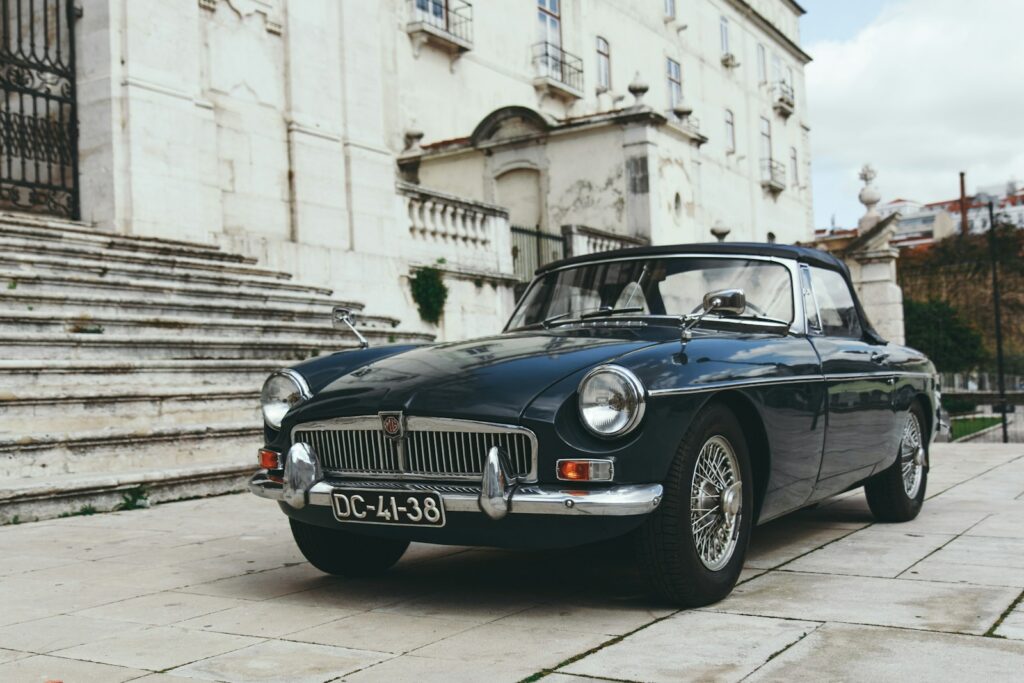
**Previous Ownership**
The provenance of prior ownership can exponentially raise a classic vehicle’s value. If a car was once owned by a noteworthy celebrity, especially one with strong ties to motorsport such as a famous race car driver like Stirling Moss or a celebrity enthusiast like Steve McQueen or Paul Newman, its desirability soars.
Beyond individual owners, if the vehicle gained fame through being featured in a significant film or television show, its value will also see a substantial increase due to its cultural impact and recognizability. These cars carry a story that extends far beyond their mechanical components.
It’s also worth noting that, generally, the fewer owners a car has had, the better. Fewer previous owners often suggest that the car has been better cared for and is more likely to retain its originality and comprehensive service history, adding to its appeal as a sound investment.
Now that you’re armed with the knowledge of what makes a classic truly special from an investment perspective, let’s turn our attention to the next wave of must-have models. These are the vehicles currently showing strong signs of appreciation, offering both driving pleasure and promising financial returns. From British icons to Japanese legends and European speed demons, these classics are ready to rev into your garage.
**The Next Seven Must-Have Models Before Their Prices Soar**
Car Model Information: 1986 Mazda RX-7 GXL 2D Coupe
Name: Mazda RX-7
Caption: 1994 Mazda RX-7 R2 (FD3S)
Manufacturer: Mazda
Aka: Mazda Savanna RX-7 (Japan, 1978–1991),Mazda ɛ̃fini RX-7 (Japan, 1991–1997)
Class: Sports car
Production: 1978–2002,811,634 produced
Assembly: Hiroshima
Platform: Mazda F platform
Layout: Front-engine, rear-wheel-drive layout#Front mid-engine, rear-wheel-drive layout
Predecessor: Mazda RX-3
Successor: Mazda RX-8
Categories: 1980s cars, 1990s cars, 2000s cars, 24 Hours of Le Mans race cars, All articles needing additional references
Summary: The Mazda RX-7 is a front mid engine, rear-wheel-drive, rotary engine-powered sports car, manufactured and marketed by Mazda from 1978 through 2002 across three generations, all of which incorporated the use of a compact, lightweight Wankel rotary engine.
The first-generation RX-7, codenamed SA (early) and FB (late), is a two-seater two-door hatchback coupé. It featured a 12A carbureted rotary engine as well as the option for a 13B rotary engine with electronic fuel injection in later years. The second-generation RX-7, carrying the internal model code FC, was offered as a two-seater coupé with a 2+2 option available in some markets, as well as in a convertible body style. This was powered by the 13B rotary engine, offered in naturally aspirated or turbocharged forms. The third-generation RX-7, model code FD, was offered as a two-seater coupé with a 2+2 version offered as an option for the Japanese market. It featured a sequentially turbocharged 13B REW engine.
More than 800,000 RX-7s were manufactured over its lifetime.
Get more information about: Mazda RX-7
Buying a high-performing used car >>>
Brand: Mazda Model: RX-7
Price: $13,991 Mileage: 52,352 mi.
Read more about: Discover 15 Underappreciated Sports Cars That Are Hidden Gems
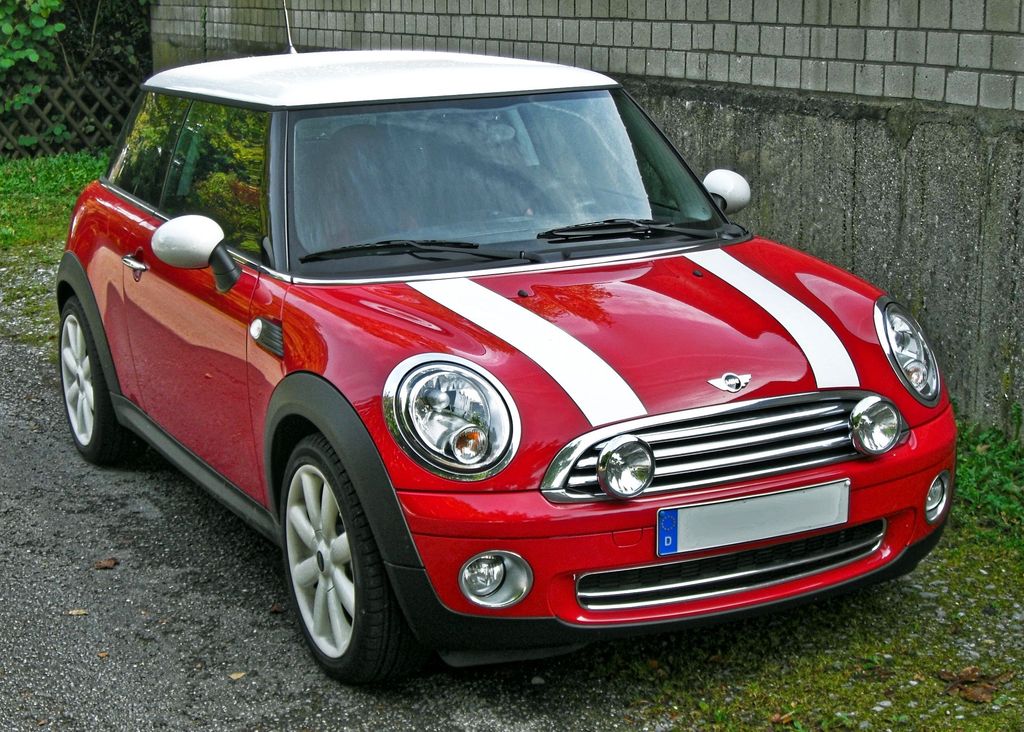
8. **Mini Cooper**The original Mini Cooper is a bonafide 1960s British popular culture icon, and its enduring charm continues to captivate enthusiasts globally. Produced for several decades by a variety of different manufacturers including British Motor Corporation, British Leyland, and the Rover Group, this diminutive vehicle embodies a unique blend of practicality and spirited driving dynamics, making it a beloved classic.
Its resurgence in popularity has been significantly spurred on by the success of today’s revived Mini model, reigniting interest in its vintage predecessors. This renewed enthusiasm has directly translated into a major influx of interest in the classic versions, leading to a steady growth in the value of clean, well-maintained used specimens.
Spanning an incredibly long desirable production run from 1959 to 2000, these cars came with various Inline-Four engine configurations ranging from 848cc to 1,275cc. Owning a classic Mini Cooper offers a direct connection to a vibrant cultural era and a consistently appreciating asset, proving that good things really do come in small, iconic packages.
Car Model Information: 2013 MINI Hardtop Cooper
Sp: uk
Caption: 1959 Morris Mini-Minor (first one built)
Name: Mini
Aka: Austin 850,Rover Mini,Austin Cooper,Austin Mini,Austin Partner,Austin Seven,Innocenti Mini,Leyland Mini,Morris 850,Morris Mascot,Morris Mini Minor,Riley Elf,Wolseley 1000 (South Africa),Wolseley Hornet
Layout: Front-engine, front-wheel-drive layout
Manufacturer: British Motor Corporation,British Leyland,Rover Group
Production: 1959–2000 (5.38 million)
Class: City car
BodyStyle: sedan (car),convertible,Station wagon,sedan delivery,coupe utility
Engine: BMC A-series engine,Straight-four engine
Designer: Alec Issigonis,John Sheppard (car designer)
Transmission: 4-speed manual,AP automatic transmission,5-speed manual (optional extra on some later models)
Length: cvt,cvt,cvt
Width: cvt
Height: cvt
Weight: cvt
Wheelbase: cvt,cvt
Related: Mini Moke,Austin Metro,Innocenti Mini,Mini Wildgoose,Mini Marcos
Successor: Austin Metro,Mini Hatch
Assembly: Panmure, New Zealand
Categories: 1960s cars, 1970s cars, 1980s cars, 1990s cars, 2000s cars
Summary: The Mini is a very small two-door, four-seat car, produced for four decades over a single generation, with many names and variants, by the British Motor Corporation (BMC) and its successors British Leyland and the Rover Group, and finally (briefly) under BMW ownership. Minis were built as fastbacks, estates, convertibles, and various other body styles. Minus a brief 1990s hiatus, from 1959 into 2000, an estimated 5.38 million of all variations combined were built, and the Mini’s engines also powered another 2 million Mini Metros, though the Mini eventually outlasted its successor.
Initially, the Mini was marketed under the Austin and Morris names, as the Austin Seven and Morris Mini-Minor; the Austin Seven was renamed Austin Mini in 1962 and Mini became a marque in its own right in 1969. Retrospectively, the car is known as the “Classic Mini” to distinguish it from the modern MINI family of vehicles produced since 2001 by German carmaker BMW, who took ownership of the Mini name following the sale of Rover Group in 2000.
This distinctive two-door car was designed for BMC by Sir Alec Issigonis. Its space-saving transverse engine and front-wheel drive layout – allowing 80% of the area of the car’s floorpan to be used for passengers and luggage – influenced a generation of car makers. The front-wheel-drive, transverse-engine layout were used in many other “supermini” style car designs such as Honda N360 (1967), Nissan Cherry (1970), and Fiat 127 (1971). The layout was also adapted for larger subcompact designs. In 1999, the Mini was voted the second-most influential car of the 20th century, behind the Ford Model T, and ahead of the Citroën DS and Volkswagen Beetle. It is also considered an icon of 1960s British popular culture.
The Mini Mark I had three major UK updates: the Mark II, the Clubman, and the Mark III. Within these was a series of variations, including an estate car, a pick-up, a van, and the Mini Moke, a jeep-like buggy. The performance versions, the Mini Cooper and Cooper “S”, were successful as both race and rally cars, winning the Monte Carlo Rally in 1964, 1965, and 1967. The Mini was manufactured in England at the Longbridge plant in Birmingham located next to BMC’s headquarters and at the former Morris Motors plant at Cowley, as well as in Australia (Victoria Park/Zetland BMC Australia factory) and later also in Spain (Authi), Belgium, Italy (Innocenti, as the Innocenti Mini), Chile, Malta, Portugal, South Africa, Uruguay, Venezuela, and Yugoslavia (IMV). In 1980, British Leyland launched the Mini’s follow-up, the Austin Metro, however the Mini outlasted it and continued to be produced at Longbridge until October 2000.
Get more information about: Mini
Buying a high-performing used car >>>
Brand: Mini Model: Cooper
Price: $6,975 Mileage: 109,742 mi.
Read more about: Why New Cars Are Getting Too Complicated :11 Models Buyers Are Avoiding

9. **Nissan 240SX**The Nissan 240SX, a sporty vintage Japanese hatchback, stands as the successor to Nissan’s 200SX S12 model and has firmly cemented its place in the collector car scene. Produced in two distinct generations – the S13 from 1989 to 1994, and the S14 from 1994 to 1998 – both variants have become incredibly popular, especially within the tuner and drift communities.
Powered consistently by a robust 2.4-liter inline-four engine, these models are widely anticipated to continue their upward trend in value. This projection is largely due to the dwindling supply of clean, unmolested examples, as many surviving cars have been extensively modified or pushed to their limits through racing. Finding an original, well-preserved 240SX is becoming increasingly rare.
With clean examples typically trading hands for anywhere from $10,000 to $25,000, the Nissan 240SX represents one of the more affordable entry points into investment-grade classics on this list. It offers a fantastic blend of accessible performance, iconic JDM styling, and strong community support, making it a smart buy for enthusiasts and investors alike.
Read more about: Unearthing the Gems: 14 Rare Cars of the 1970s That Defined an Era of Power and Panache

10. **Porsche 924/944**For a time, the Porsche 924 and 944 were unfairly dismissed by some purists as mere rebadged Volkswagens, not quite “true” Porsches. However, time has proven these transaxle models to be far more than just affordable entry points into the marque. In recent years, both the 924 and 944 have experienced a significant surge in value, mirroring a broader trend across almost all vintage models from the esteemed Stuttgart automaker, even extending to previously considered “oddball” models like the 914 and 928.
This robust appreciation makes the 924 and 944 some of the best investment cars on this list, especially from a purely financial standpoint. They offer the prestige of the Porsche badge, combined with excellent driving dynamics and surprising practicality, without the exorbitant price tags of some of their 911 siblings. Their balanced handling and robust engineering make them a joy to own and drive.
Encompassing desirable years from 1976 to 1991, these front-engined, rear-wheel-drive Porsches were available with various Inline-Four engine configurations, including 2.0L, Turbocharged 2.0L, 2.5L, Turbocharged 2.5L, 2.7L, and 3.0L variants. Their increasing collectibility underscores their growing recognition as legitimate, appreciating classics within the Porsche lineage.
Read more about: Beyond the Garage: 15 Vintage Cars That Are Secretly Skyrocketing in Value Right Now
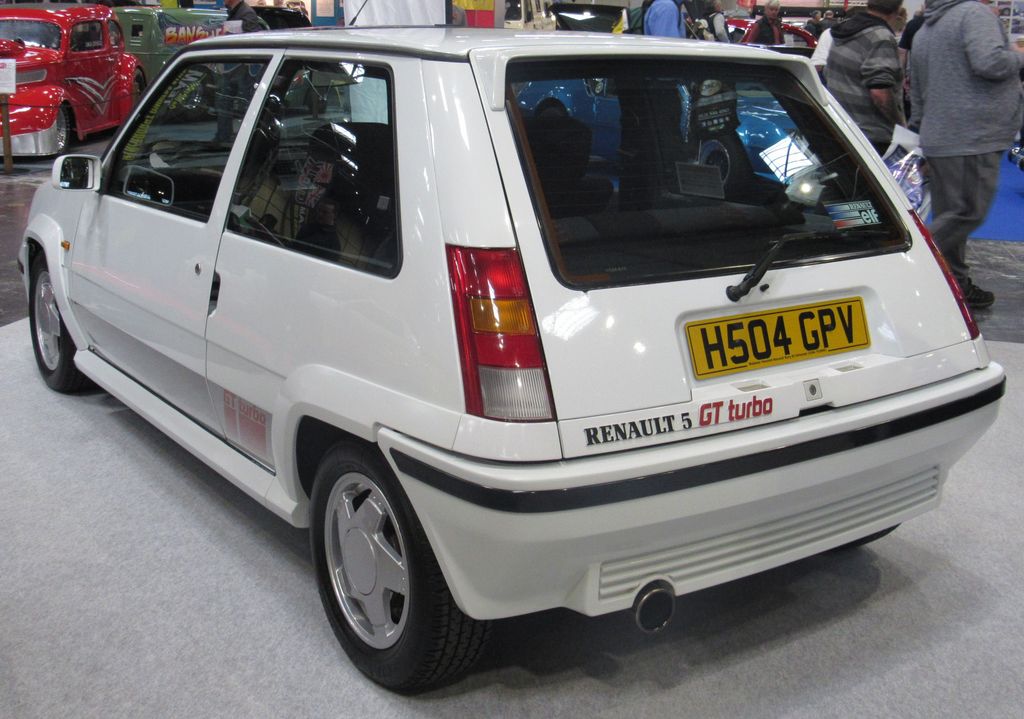
11. **Renault 5 GT Turbo**The Renault 5 GT Turbo is much more than just a car; it’s a homologated, street-legal Euro classic with a direct lineage to an iconic Group B rally car. This connection instantly imbues it with a raw, thrilling character that makes it undeniably exciting to drive. Its aggressive stance, highlighted by an ultra-widebody aero kit, clearly speaks to its racing heritage and makes it a visual standout.
What truly sets the 5 GT Turbo apart in the current market is its astonishing rate of appreciation. It very well might be the fastest-appreciating classic car available right now that can still be purchased for under six figures, having reportedly increased in value by an impressive 25% over just the last year alone. This meteoric rise underscores its burgeoning popularity and increasing desirability among collectors.
With desirable years spanning from 1980 to 1986, this hot hatch was typically powered by a turbocharged 1.4L or 1.5L Inline-Four engine, delivering potent performance in a lightweight package. For enthusiasts seeking a genuinely thrilling drive with a strong Group B pedigree and an undeniable financial upside, the Renault 5 GT Turbo presents an exceptionally compelling opportunity that won’t stay affordable for long.
Car Model Information: 2024 Genesis GV70 2.5T AWD
Name: Renault 5
Caption: Second generation R5
Manufacturer: Renault
Production: 1972–1996
Class: Supermini car
Successor: Renault Clio,Renault Twingo
Categories: 1980s cars, 1990s cars, Articles with French-language sources (fr), Articles with Spanish-language sources (es), Articles with short description
Summary: The Renault 5 is a five-passenger, three or five-door, front-engine, front-wheel drive hatchback supermini manufactured and marketed by the French automaker Renault over two generations: 1972–1985 (also called R5) and 1984–1996 (also called Super 5 or Supercinq).
The R5 was marketed in the United States and Canada as Le Car, from 1976 until 1983. Renault marketed a four-door sedan variant, the Renault 7, manufactured from 1974 until 1984 in Spain by Renault’s subsidiary FASA-Renault and exported to select markets.
The Renault 5 became the best-selling car in France from 1972 until 1986, with a total production exceeding 5.5 million over 14 years, making it France’s most popular car.
Get more information about: Renault 5
Buying a high-performing used car >>>
Brand: Renault Model: 5 GT Turbo
Price: $39,995 Mileage: 20,074 mi.
Read more about: Built to Last: A Deep Dive into the Most Reliable and Least Dependable Affordable SUVs for Long-Term Value

12. **Suzuki Samurai**Once viewed primarily as a quirky, budget-friendly 4×4 platform, the Suzuki Samurai has quietly but steadily transformed into a legitimate collector car. Its unpretentious charm and surprising off-road capability have cultivated a dedicated, albeit niche, following that continues to expand, driving up demand for well-preserved examples.
One of the most appealing aspects of the Samurai as an investment is its accessibility. With average examples typically fetching around $10,000, it remains one of the more affordable classics to add to a collection. This low barrier to entry makes it an attractive option for new collectors or those looking to diversify their automotive assets without breaking the bank.
Covering desirable years from 1985 to 1995 and powered by a reliable 1.3L Inline-Four engine, the Suzuki Samurai offers a unique blend of utilitarian simplicity and growing collectibility. It’s a testament to the fact that not every appreciating classic needs to be a high-performance sports car; sometimes, a rugged, characterful 4×4 can be just as shrewd an investment.
Car Model Information: 1988 Suzuki Samurai Base 2dr 4WD SUV w/ Soft Top
Name: Suzuki Jimny
Caption: 2019 Suzuki Jimny SZ5
Manufacturer: Suzuki
Production: April 1970 – present (2.85 million units sold by September 2018)
Class: Off-road vehicle,mini SUV
BodyStyle: SUV,van,convertible,pickup truck
Layout: Front-engine, rear-wheel-drive layout,Front-engine, four-wheel-drive layout
Chassis: Body-on-frame
Related: Suzuki Vitara,Maruti Gypsy
Categories: 1980s cars, 1990s cars, 2000s cars, 2010s cars, All articles with minor POV problems
Summary: The Suzuki Jimny (Japanese: スズキ・ジムニー, Suzuki Jimunī) is a series of four-wheel drive off-road mini SUVs, manufactured and marketed by Japanese automaker Suzuki since 1970.
Originally belonging to the kei class, Japan’s light automobile tax/legal class, the company continues to market a kei-compliant version for the Japanese and global markets as the Jimny, as well as versions that exceed kei-class limitations. Suzuki has marketed 2.85 million Jimnys in 194 countries through September 2018.
Get more information about: Suzuki Jimny
Buying a high-performing used car >>>
Brand: Suzuki Model: Samurai
Price: $19,998 Mileage: 85,864 mi.
Read more about: Beyond the Garage: 15 Vintage Cars That Are Secretly Skyrocketing in Value Right Now
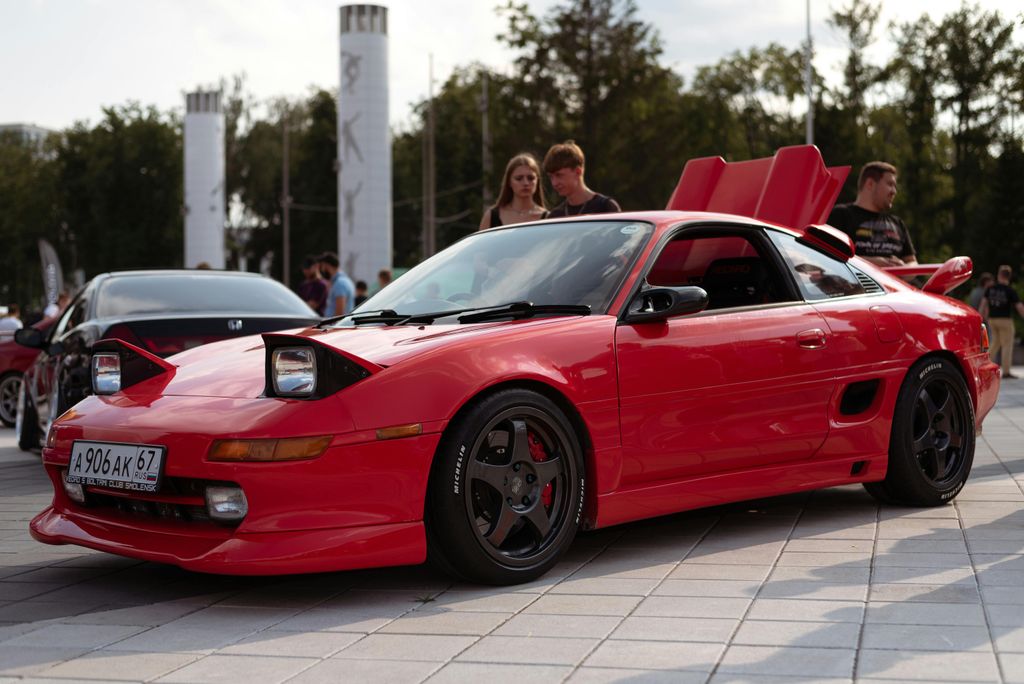
13. **Toyota MR2**The Toyota MR2 stands as an exotic yet remarkably affordable sports car classic, holding the distinction of being Japan’s first-ever rear mid-engined production car. Its innovative layout, which places the engine behind the driver and ahead of the rear axle, contributes to a balanced and engaging driving experience that feels far more premium than its price tag suggests.
Produced across three distinct generations, the first two (AW11 and SW20) are by far the most coveted from both an investment and collector’s standpoint, with their sharp styling and responsive handling. The MR2 also boasts a rich motorsport pedigree, having been extensively campaigned by both factory teams and countless privateer drivers across the globe, adding to its allure and historical significance.
Focusing on desirable years from 1984 to 1999, the MR2 was available with various Inline-Four engine options, including 1.5L, 1.6L, and Supercharged 1.6L configurations. Its unique engineering, strong enthusiast following, and proven motorsport heritage position the Toyota MR2 as a fantastic and accessible investment opportunity for those seeking a true driver’s car with appreciating value.
Car Model Information: 1988 Toyota MR2 Supercharged
Name: Toyota MR2
Caption: Second generation MR2
Manufacturer: Central Motors
Aka: Toyota MR (France and Belgium)
Production: 1984–2007
Assembly: Sagamihara, Kanagawa
Class: Sports car
Layout: Rear mid-engine, rear-wheel-drive layout
ModelYears: 1985–2007
Categories: 1990s cars, 2000s cars, All Wikipedia articles written in American English, All articles containing potentially dated statements, All articles needing additional references
Summary: The Toyota MR2 is a line of two-seater, mid-engined, rear-wheel-drive sports cars, manufactured in Japan and marketed globally by Toyota from 1984 until 2007 over three generations: W10 (1984–1989), W20 (1989–1999) and W30 (1999–2007). It is Japan’s first rear mid-engined production car.
Conceived as a small, economical and sporty car, the MR2 features a straight-four engine, transversely mounted in front of the rear axle, four-wheel disc brakes, and fully independent coilover suspension – MacPherson struts on each wheel.
The name MR2 stands for either “mid-ship run-about 2-seater” or “mid-engine, rear-wheel-drive, 2-seater”. In French-speaking markets, the vehicle was renamed Toyota MR because the abbreviation “MR2” sounds like the profanity “merdeux” when spoken in French.
Get more information about: Toyota MR2
Buying a high-performing used car >>>
Brand: Toyota Model: MR2
Price: $27,000 Mileage: 36,611 mi.
Read more about: Rare Cars of the 1980s: Icons of Performance Innovation and Style
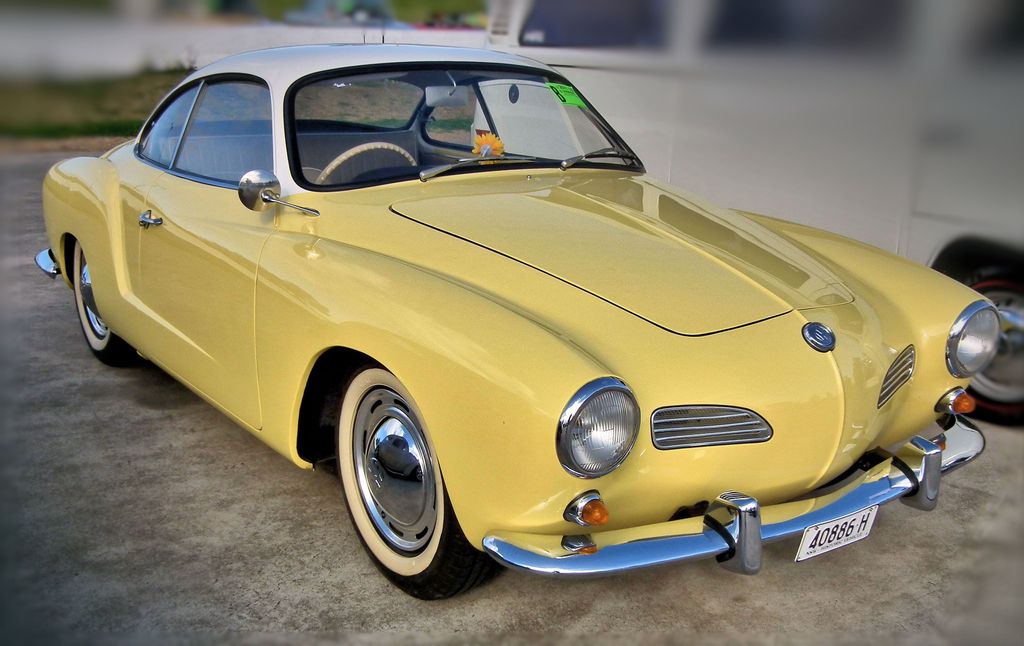
14. **Volkswagen Karmann Ghia**The Volkswagen Karmann Ghia is a stunning classic car that continues to impress with its elegant lines and sophisticated design, especially considering its accessible price point and strong potential for future value appreciation. Built upon the robust and ubiquitous Type 1 Beetle platform, it combines mechanical simplicity and widespread parts availability with truly captivating aesthetics.
What truly sets the Karmann Ghia apart is its unique design pedigree: its iconic bodywork was penned by the revered Italian design firm Carrozzeria Ghia and then meticulously built by the German coach-building house Karmann. This fusion of Italian flair and German engineering craftsmanship results in a car that exudes timeless European style.
Spanning desirable years from 1955 to 1974, and powered by various Flat-Four engines (1.2L, 1.3L, 1.5L, or 1.6L), the Karmann Ghia is an investment-grade classic that offers a rare benefit: it can genuinely be driven on a regular basis without significantly impacting its value, provided it is properly maintained. This blend of beauty, reliability, and usability makes it an exceptionally rewarding choice for collectors.
Car Model Information: 2011 Mercedes-Benz S-Class S 550 4MATIC
Name: Volkswagen Types 14, 34, and 145
Caption: 1962 Type 14 VW Karmann Ghia
Manufacturer: Volkswagen
Production: Germany,Type 14: 1955–1974,Type 34: 1961/1962–1969,
445,238 total units built:,Coupé: 364,401 (Type 14 and 34),Cabriolet: 80,837 (all Type 14)
Brazil,Type 14: 1962–1971,TC (Touring Coupé): 1972–1975,
41,689 total units built:,Coupé: 23,393,Cabriolet: 177,TC (Touring Coupé): 18,119
Related: Volkswagen Beetle,Volkswagen Type 3,Puma (car manufacturer)#Volkswagen era
Class: Sports car
BodyStyle: convertible (car)
Engine: flat-4
Designer: Carrozzeria Ghia
Layout: RR layout
Successor: Porsche 914,Volkswagen Scirocco,Volkswagen SP2
Assembly: Osnabrück
Categories: 1960s cars, 1970s cars, All articles with unsourced statements, Articles with short description, Articles with unsourced statements from May 2023
Summary: The Volkswagen Karmann Ghia are a family of three overlapping sports car models produced by Volkswagen, marketed in 2+2 coupe (1955–1975) and 2+2 convertible (1957–1975) body styles, though German production ended one year before that in Brazil. Internally designated the Type 14 (1955–1975), the Type 34 (1962–1969), and the Type 145 TC (1972–1975; Brazil), the Karmann Ghia cars combined the floorpans and mechanicals of the Type 1 / Beetle or Type 3 ‘ponton’ models with styling by Italy’s Carrozzeria Ghia, and hand-built bodywork by German coachbuilding house Karmann.
The 1955 Type 14 Karmann Ghia was just the second Volkswagen passenger car ever produced, after the Beetle, and launched six years before the Type 3 notchbacks, fastbacks and Variants (squarebacks). They were faster and more expensive than the Beetle, but very cramped in the back, despite their wider, postwar and nearly slabsided body design. Two years later, in 1957, a convertible was added.
In 1961, the Karmann Ghia briefly lost its title of fastest Volkswagen, upon launch of the more powerful 1500cc Type 3 models, but later that year, Volkswagen, Ghia, and Karmann presented an all new Karmann Ghia – Type 34, using the Type 3’s floorpan and 1500cc powertrain. Made from 1962 to 1969, this had both new, more modern, angular and roomier bodywork; and a new, more luxurious interior, making it substantially more expensive than all other VW passenger cars. Additionally, the Type 34 was one of the world’s first cars with a power operated steel sunroof option. The Type 34 Karmann Ghia thus became VW’s range-topper again – costing up to twice the price of a Beetle – while the cheaper Type 14 remained in production. Only the latter offered a convertible.
Failure to offer the Type 34 in the United States – the Karmann Ghia’s most important market – combined with high pricing elsewhere likely contributed to limited sales, and after the type 14 also received the 1500cc engine in 1967, production of Type 34s was ended during 1969. Volkswagen of Brazil nevertheless looked for an alternative in its market segment, and so Carrozzeria Ghia was again commissioned, to design a third Karmann Ghia model, for the South American market, the Karmann Ghia TC (Touring Coupé), made in Brazil from 1972–1975. The result was a stylish, rakish fastback that offered good interior space for a 2+2 car.
For its final model year, the vestigial rear seat in the Type 14 was discontinued for North American models, as it lacked provisions for seat belts; all Karmann Ghias for 1974 were marketed strictly as two-seaters.
More than 445,000 Karmann Ghias were produced in Germany over the car’s production life, not including the Type 34 variant. Volkswagen do Brasil (Volkswagen Brasil) produced 41,600 Type 34s in Brazil for South America between 1962 and 1975.
Long noted for its exterior styling, the Karmann Ghia was designed with input from numerous individuals at Carrozzeria Ghia and was strongly influenced by Virgil Exner’s work, though all of its designers passed without a definitive individual styling attribution.
Get more information about: Volkswagen Karmann Ghia
Buying a high-performing used car >>>
Brand: Volkswagen Model: Karmann Ghia
Price: $18,000 Mileage: 71,961 mi.
Read more about: The 10 Exciting Classic Sports Cars You Can Own Without Breaking the Bank
As we’ve seen, the world of classic car investment is rich with opportunity, blending the tangible joy of ownership with the very real potential for significant financial returns. Whether you’re drawn to the allure of Italian design, the rugged reliability of a vintage 4×4, or the pure driving experience of a lightweight sports car, there’s an appreciating asset out there for every taste and budget. These vehicles are more than just metal, rubber, and glass; they are living pieces of history, ready to offer both a thrilling ride and a smart place to put your money. The key is to be informed, be passionate, and be ready to enjoy the ride as your automotive treasure steadily climbs in value.


